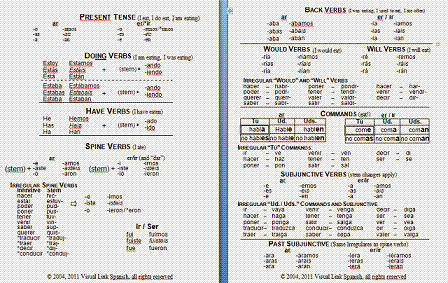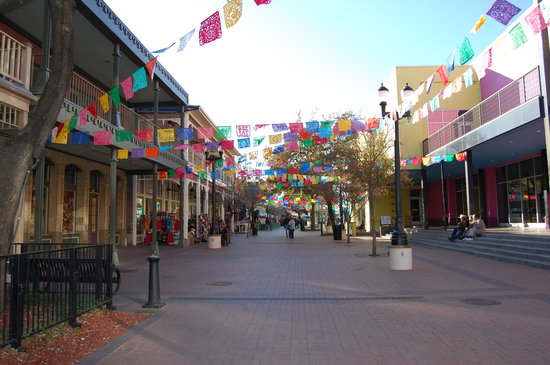Many of you have wanted a Spanish verb conjugation chart that is small enough to fit into your pocket, yet large enough to cover all the basic Spanish conjugations.
Well, here it is. We’ve created it. A Spanish verb conjugation chart that covers all Spanish verb tenses and many irregulars that’s small enough to print and fit into your pocket.
Print Your Own Copy – Free!
Spanish Verb Conjugation Chart
Click to Download and Print Your Free Spanish Verb Conjugation Chart
This Spanish Verb Conjugation Chart covers every verb conjugation in the Spanish language (except “Future Subjunctive” which was pretty much only used back in the 16th century or before). It includes: Present, Present Progressive (Doing Verbs), Present Perfect (Have verbs), Preterite (Spine Verbs), Imperfect (Back Verbs), Conditional (Would Verbs), Future (Will Verbs), Imperatives (Commands), Subjunctive and Past Subjunctive conjugations for all verbs.
Now, the chart is not all inclusive. It does include many irregular Spanish verbs, however, it does not include all Spanish irregular verbs.
How to Learn Spanish Verb Conjugation in General – Especially for Irregular Spanish Verbs
To learn how to conjugate the top 320 most common verbs in Spanish – with all their irregulars in all tenses, try downloading a free 7-day trial of one or both of the Visual Link Spanish Verb Conjugation courses below.
Some people have asked us why the Introductory Verb Course is called “Level II”. Well, technically it’s the Level I of the verb courses, however, our actual Level I course is a sentence building and conversation course and has nothing to do with verbs. So, if you want to learn verbs, our Level II Introductory Verb Course is the way to go – especially if you’ve never had Spanish before. Go ahead and try it – it’s free for 7 days! Also, remember the Spanish Verb Conjugation Chart is always completely free. You download it and it’s free forever!
¡Hasta luego Amigos!
Enjoy learning Spanish verbs!















